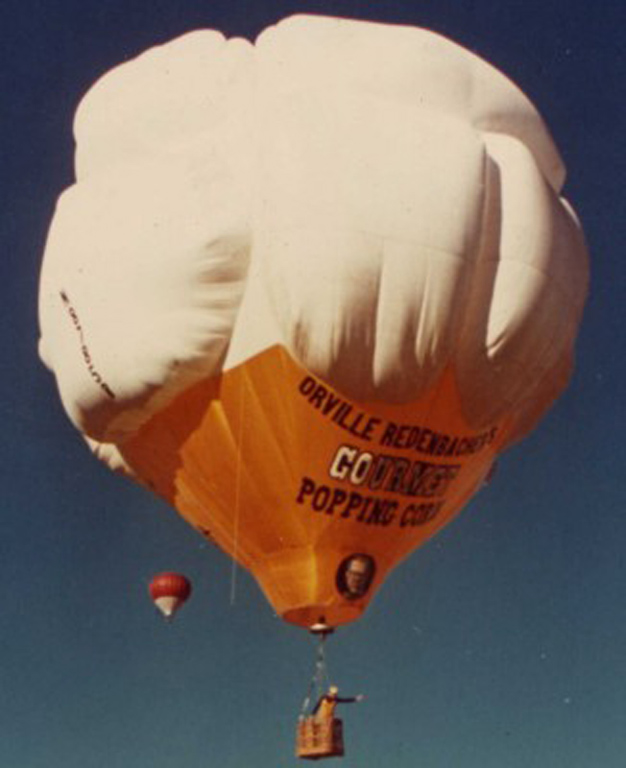
Natural History of the Kitchen: Popcorn
Article Published by: eatmedaily.com
Welcome to Natural History of the Kitchen, by EMD’s Stephanie Butler. Each week, Stephanie explores the background of an appliance, gadget or product that helped to make cooking what it is today. This week: Popcorn.
Since last week we took a look at microwaves, it seems right that this week the spotlight shines on a product that folks know mainly in microwaved form: popcorn. It’s been much more than a movie treat for thousands of years, used as currency, for soup and beer, packing materials, and jewelry. Whether you take yours with extra salt, light on the butter, or au naturel, there are popcorn facts for all tastes in this week’s Natural History of the Kitchen.
Popcorn Through The Ages
Estimates vary, but most anthropologists agree that popcorn got its start in South America around 5,000 years ago, and it’s been popular ever since. Spanish conquistadors have detailed records of Aztecs popping corn, even going as far as mentioning the specific rituals in which the corn was used. Farther north, Pilgrims loved popcorn so much that they ate it for breakfast with cream and sugar, creating low-tech Corn Pops years before General Mills.
Pushcart vendors sold bags on corners in large cities, and the first self-powered machine was patented in 1893. It popped corn in a mixture of lard and clarified butter, sturdy fats that were able to resist the high temperatures needed to explode kernels. Popcorn was still a street treat up until the Great Depression, when its low cost made it the snack of choice for thousands of unemployed Americans.
World War II was also a boon for the popcorn industry. Since sugar and fats were so heavily rationed, popcorn was a perfect treat. However, post-WWII popcorn consumption decreased dramatically. Fewer people wanted a frugal, sugarless snack, and movie theater attendance was down; a double blow to one of popcorn’s most profitable markets. [Popcorn sign via Vintage Metal Art.]
Enter the microwave. Up until the 1980s, stove-top popping pans and electric poppers were the main option for popping corn. It was tasty, sure, but also messy and decidedly old fashioned. Popcorn was a go-to test food for the early microwave scientists at Raytheon, but it took nearly 40 years before scientists at General Mills finally figured out a way to cook corn in a way that minimized unpopped kernels (or “old maids”) and also kept popcorn from scorching. Microwave bags have a special device called a susceptor laminated inside the bag. Normally placed underneath the oil and seasoning packet in a bag, this metal film melts the fats, coating the corn as it expands. The bags make popcorn popping quick and easy, but come with some very serious (albeit rare) health consequences.
Popcorn: The (Not Quite) Silent Killer
In 2007, a Colorado furniture salesman went to his doctor complaining of shortness of breath. He was overweight, but had never smoked, and seemed to not have any of the risk factors associated with advanced lung disease. Doctors were puzzled until one realized that the man’s test results were consistent with those of popcorn factory workers in the Midwest. In the 1990s eight workers had come down with severe asthma-like symptoms: the airway obstructions and scarring became so severe that a number of these workers were placed on lung transplant lists.
When asked about his popcorn habits, the man was taken aback. Surely enough, he ate at least two bags a day, and had been doing so for 10 years. His wife even called him “Mr. Popcorn.” The culprit in the story is diacetyl, a chemical used to make butter flavoring. Diacetyl inhalation is especially dangerous when the compound has been heated, and, wouldn’t you know it, this Colorado man loved to stick his nose in a just opened popcorn bag. Diacetyl levels in his home were found to be on par with those in a major popcorn factory. He kicked his habit, but diacetyl is still recognized as an approved food substance by the FDA, and not all microwave popcorn manufacturers have taken it out of their products. It’s something to think about as you pop your next bag for movie night at home.
About Scott Livengood
Scott Livengood is the owner and CEO of Dewey’s Bakery, Inc., a commercial wholesale bakery with a respected national brand of ultra premium cookies and crackers.
Previously, Scott worked at Krispy Kreme Doughnuts for 27 years, starting as a trainee in 1977. He was appointed President of the company in 1992, then CEO and Chairman of the Board.
Scott has served on numerous boards including the Carter Center, the Calloway School of Business and the Babcock School of Management, Habitat for Humanity of Forsyth County, and the Winston-Salem Chamber of Commerce.
He started a new business, StoryWork International, in 2016 with Richard Stone. The signature achievement to date is LivingStories, a story-based program for improved patient experiences and outcomes in partnership with Novant Health.




